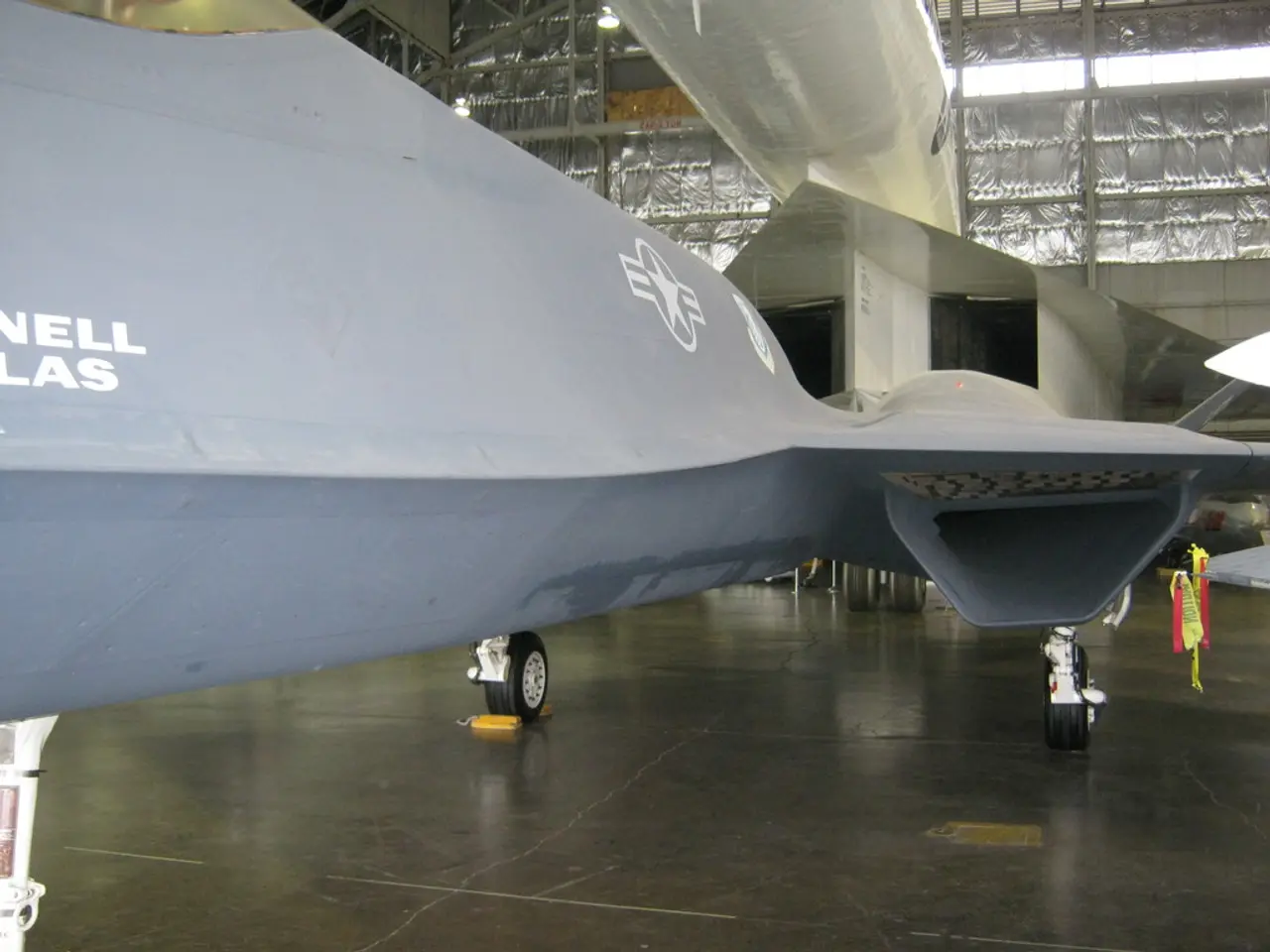Disclosed images reveal China's newest covert warplane of the third generation - China unveils third covert aircraft of its advanced sixth-generation fleet
China's Third Stealth Jet: A Game-Changer in the Global Air Arms Race
China has made a significant stride in its next-generation combat aircraft development with the unveiling of its third sixth-generation stealth jet. This tailless prototype, distinguished by a sharply swept delta wing, no vertical stabilizers, and a futuristic design optimized for supersonic speed, stealth, and long-range missions, is a potential game-changer in the global military landscape.
The new stealth jet, believed to be part of Shenyang Aircraft Corporation’s “J-XDS” or “J-50” program, showcases advanced technology and design. It features a tailless configuration with a lambda or sharply swept delta wing layout, pointed nose, and W-shaped trailing edges with a central triangular extension. The fuselage is slimmer and smaller than the previously spotted J-36 stealth fighter, suggesting potentially higher speed or specialized mission roles.
The aircraft is confirmed as supersonic and ultra-low-observable (stealth), likely incorporating advanced stealth shaping and possibly infrared suppression. Dual engine air inlets hint at powerful propulsion, but details about exhaust and exact size remain unclear. Whether this aircraft is manned, optionally piloted, or an unmanned combat aerial vehicle (UCAV) remains unconfirmed, though analysts consider it might be an advanced drone or optionally piloted platform designed for collaborative operations or loyal wingman roles.
This sixth-generation fighter is seen as a deliberate move by China to demonstrate its technological progress and exert geopolitical pressure. Its capability to operate as a crewed or drone platform suggests flexibility in future air combat tactics, emphasizing stealth, networked operations, and long-range strike ability. The rapid development and flight testing of multiple distinct prototypes within a single year underscore China's intent to dominate future air combat arenas and potentially outpace the U.S. and European sixth-gen fighter programs.
While the U.S. continues to develop the Next Generation Air Dominance (NGAD) program and Europe progresses with their Future Combat Air System (FCAS) involving France, Germany, and Spain, China's swift advancement presents significant strategic pressure. The emergence of multiple sixth-generation prototypes suggests China might challenge Western air superiority in the coming decades, intensifying the global air arms race.
In addition to the sixth-generation stealth jet, China is also developing the strategic stealth bomber H-20 in addition to the Chengdu J-20 "Mighty Dragon" and the Shenyang J-35A. The H-20 is expected to be a strategic bomber with intercontinental range, while the J-35A is optimized for carrier operations. The Chengdu J-36 could serve both as a heavy interceptor and as a tactical bomber (JH-XX), with large weapon bays for long-range weapons or ground-attack missions.
China is also developing stealth and hypersonic surveillance aircraft and drones, further expanding its air combat capabilities. The authenticity of the leaked videos and photos is being questioned by some analysts, but the rapid pace of China's advancements in this field is undeniable.
As conventional jets without stealth capabilities stand no chance in such a fight as they cannot carry very long-range missiles themselves and are easily detected by sensors, China's sixth-generation stealth jets could revolutionize air combat tactics. The Shenyang J-50, also known as the J-XDS, could serve as an agile fighter for more traditional combat scenarios or as an escort for the J-36 to enhance manned-unmanned teaming capabilities.
Europe's Global Combat Air Programme (GCAP) aims for deployment in the 2030s, but is currently far behind in the development of a sixth-generation fighter jet. This leaves a significant gap in the global military balance, which China seems determined to exploit.
In summary, China's third sixth-generation stealth jet is a highly advanced, possibly optionally piloted stealth fighter with a tailless, delta wing design optimized for stealth and speed. Its existence indicates China's aggressive push in next-generation air combat technology, with potential major implications for global military balance against the USA and European efforts.
- The science and technology behind China's sixth-generation stealth jet, such as its tailless, delta wing design and advanced stealth shaping, could significantly impact the employment policy of various air forces around the world, as conventional jets may struggle to compete in the upcoming air arms race.
- The third sixth-generation stealth jet developed by China, known as the Shenyang J-50 or J-XDS, could potentially shift the dynamics of the global military landscape, not only in the realm of politics but also in the finance sector, as countries may reallocate resources to develop countermeasures or acquire similar technology.
- As China pushes forward with its sixth-generation stealth jet technology, the general-news, sports, and technology industries will closely monitor advancements, as the Mainland's progress in this field could influence the outcome of sports events like the Olympics (where technology plays a crucial role) and could introduce new career opportunities in the technology field through jobs focused on air combat technology and innovation.




